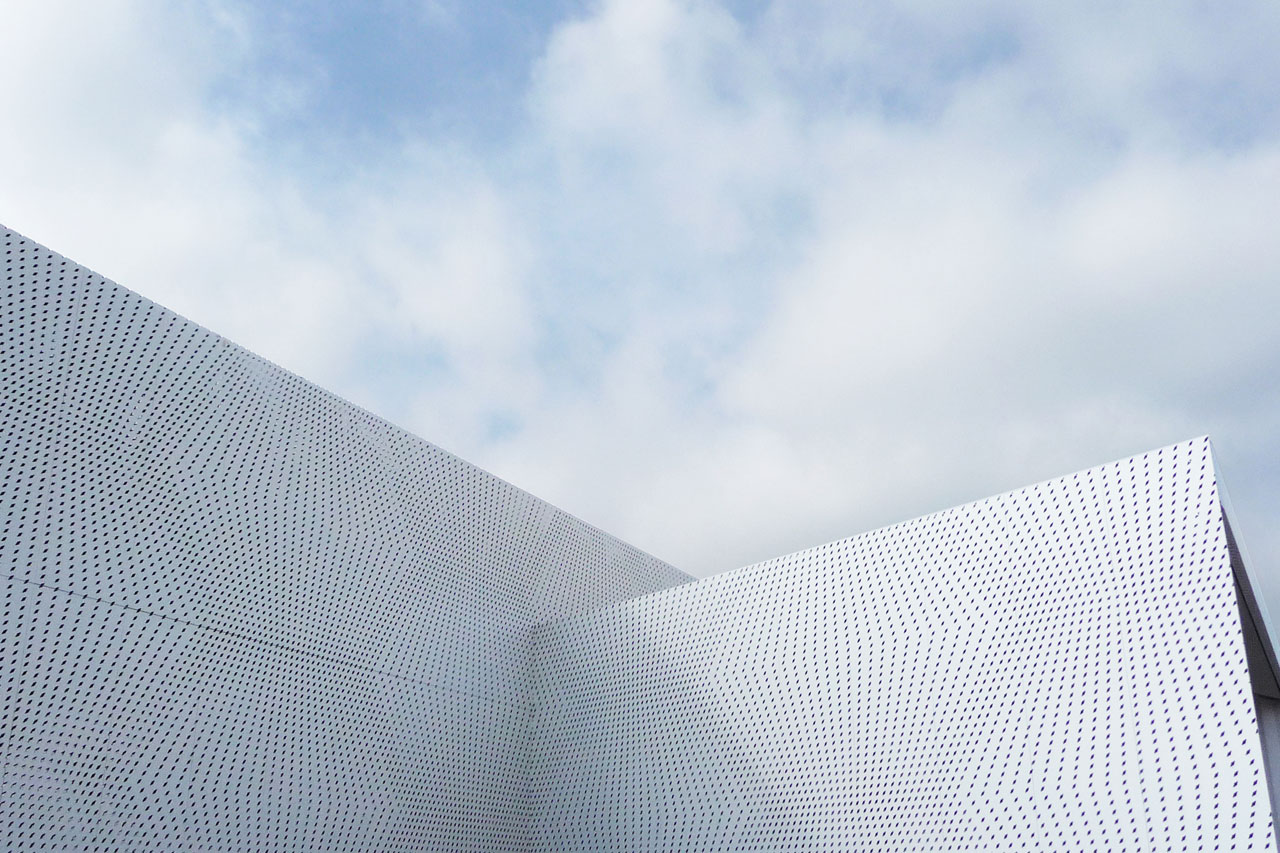HASHIM SARKIS /
SKY-BOUND
When the Fresno Metropolitan Museum lifts, it remains anchored to the ground by a web of planes and lines. These may be understood generally as structural scaffolds or as distortions of the rationalizing grid that held together much of modern architecture, but here they are primarily visual construction lines that transpose the building into a new optical field, a new context. All of Maltzan’s recent projects are preoccupied with this transposition.
In Maltzan’s earlier projects, the relational tension with context—achieved by visual parallax (MoMA Queens) or via perspectival distortions among pavilions (the art schools)—stopped short of transposition. In the new work, pavilions have given way to system-like formal configurations (repetitive slab, mat, continuous band) and the visual lines now entangle the forms (cat’s cradle) and wrap and buffer them from context.
Paradoxically, the recent projects are literally grounded in their sites. The Beach Residence takes advantage of the triple parcel to open up and absorb the sea. The Leona Drive Residence integrates the topography of the ravine into the house’s circulation. In Fresno, both the ground and the roof allude to the geometry of the agricultural fields. However, these projects go further to reshape the context in at least four ways.
First, the cleared grounds are reoccupied as much by vision as by use. The publicness of the museum allows for the program to begin outside on the ground. Even the houses spill a bit of their guts. The sections show how far we have moved from the horizontal break of a Mies or Corbusier lift to a more continuous ground-building relationship. Second, Maltzan internalizes the distortions in response to site and makes self-referential forms out of them. The outdoor galleries between the wrapper and the grid in the Fresno Museum refer to the internal tensions between the two geometries, not to the external conditions that initiated this dichotomy. Third, the ground always spills back out from the building into the context, suggesting a new visual and ambulatory order (the sinuous walk in Leona, the return ramp ofSonoma). Fourth, the buildings’ interior spaces appropriate more sky out of the context than anything else. On the outside, the lifted forms embrace existing buildings like a new skyline.
Maltzan’s recent work challenges contemporary architecture’s inattentiveness to context, demonstrating how it is possible to lift without abandoning and how to extend beyond negation to transposition. Along the way, he outlines the terms of a new geography; a fluid ground, an internalized context, a centrifugal vision, and an embracing sky.
Originally published in Lift (exhibition catalogue)
Harvard Graduate School of Design, 2003

